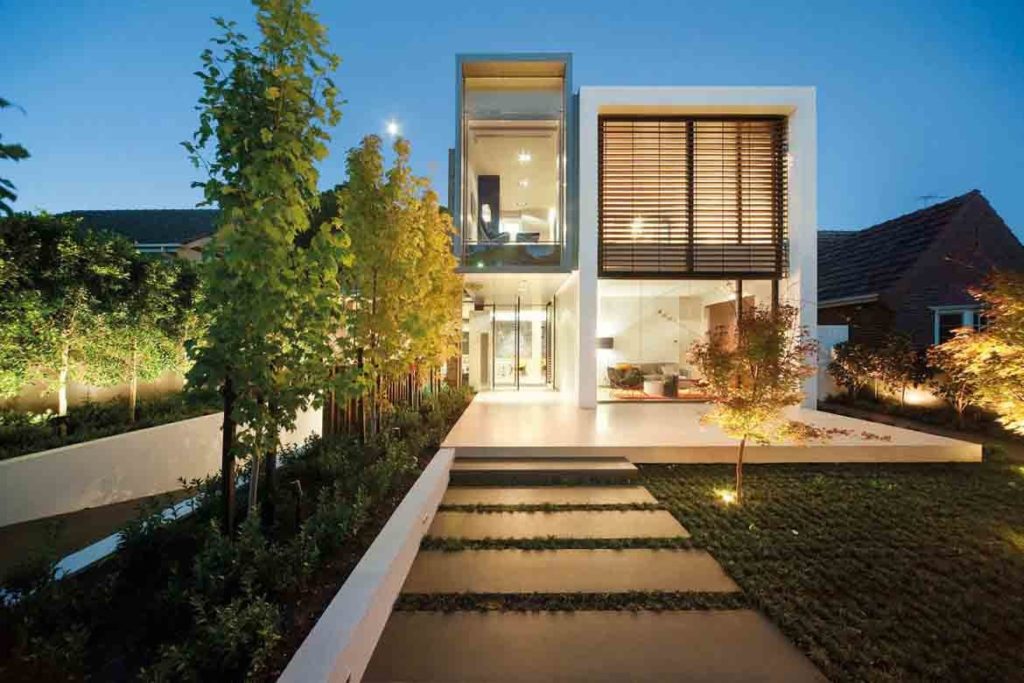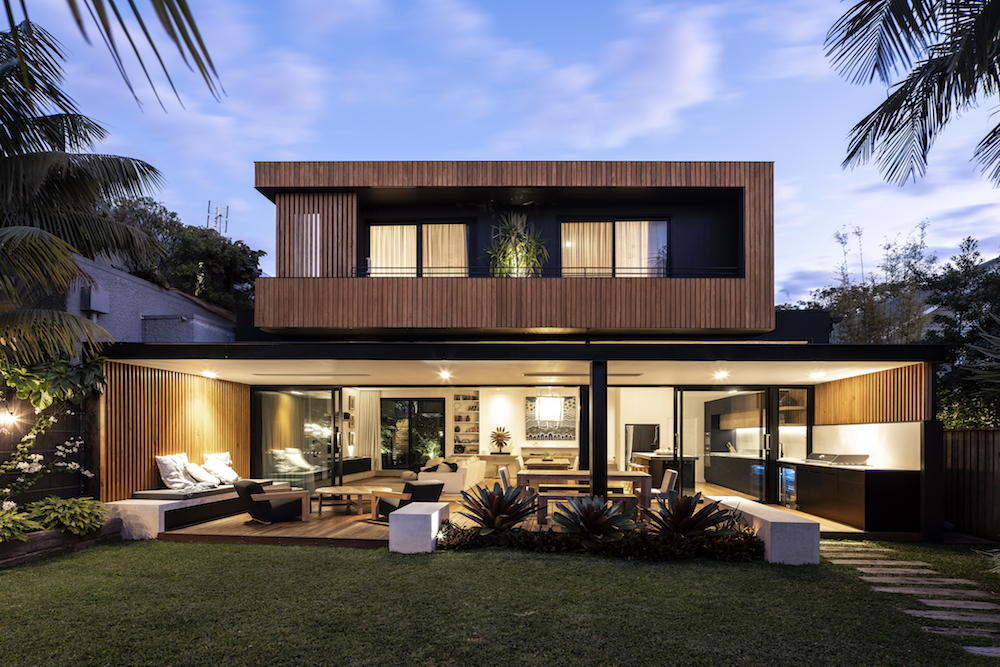Top Fads in Residential Design You Should Learn About
As residential design continues to progress, several engaging trends are forming the way we create and occupy our living spaces. Secret developments such as sustainable structure methods, the assimilation of smart home modern technology, and the surge of modular homes highlight a considerable shift in the direction of both capability and ecological responsibility. Furthermore, concepts like open strategy living and biophilic layout are redefining our interaction with room and nature. Understanding these patterns not just notifies style selections however likewise discloses broader ramifications for way of living and neighborhood - residential house architect. What might these technologies suggest for the future of residential living?
Sustainable Structure Practices
A raising variety of household projects are accepting lasting structure methods, driven by an expanding understanding of ecological effect and power effectiveness. This change is identified by the integration of environmentally friendly materials, energy-efficient designs, and innovative construction methods. Builders and homeowners are increasingly focusing on the usage of eco-friendly sources, such as bamboo and recycled metals, which not only reduce the carbon impact however likewise enhance the sturdiness and aesthetic appeal of residential or commercial properties.
Incorporating energy-efficient systems is another essential facet of sustainable building - residential house architect. Features such as high-performance insulation, energy-efficient home windows, and photovoltaic panels are ending up being standard in new residential layouts. These aspects not only add to lower power intake but additionally supply significant lasting cost savings for property owners
Moreover, the format of sustainable homes often stresses all-natural light and ventilation, lowering the reliance on fabricated illumination and climate control systems. Landscape design practices, such as xeriscaping, more promote sustainability by lessening water usage.
As the need for lasting living services remains to rise, the property style market is poised to innovate and adapt, guaranteeing that future homes are not only eco accountable yet also comfy and functional for their residents. - residential house architect
Smart Home Technology
Smart home innovation is changing the way house owners interact with their space, boosting security, energy, and benefit administration. This cutting-edge approach integrates various devices and systems, allowing individuals to manage their homes from another location or via automated procedures. Central to this fad is making use of smart devices such as thermostats, lights, security cameras, and appliances, all connected through the Web of Things (IoT)
One of the most appealing features of smart home technology is the ability to customize settings for optimal energy efficiency. Homeowners can monitor power use and change illumination, heating, and cooling based on their regimens, substantially minimizing utility costs. Advanced safety and security systems equipped with clever locks and monitoring cams provide peace of mind, making it possible for remote surveillance and alerts to prospective protection breaches.
Assimilation with voice-activated aides improves individual experience, allowing home owners to manage devices with basic voice commands. As technology remains to evolve, the possibility for smart home systems to boost lifestyle expands, making them an essential factor to consider in modern property architecture. Eventually, clever home modern technology is not simply a fad but an essential change toward a lot more intelligent living atmospheres.
Open Principle Living
Open up principle living has become a specifying feature in contemporary site household architecture, defined by the elimination of standard obstacles between spaces. This layout viewpoint promotes fluidness and connection within the home, allowing for a seamless shift in between locations such as the cooking area, dining, and living rooms. By eliminating walls and dividers, open principle formats create a sense of spaciousness, promoting a welcoming ambience that boosts social communication.

In addition, this method to domestic style lines up with minimalism, focusing on useful simplicity and visual comprehensibility. House owners appreciate the convenience of these designs, which can be conveniently adjusted to show individual style via furniture setup and decoration. As open concept living proceeds to gain grip, it remains a testimony to evolving household characteristics and the wish for homes residential house architect that boost connection and convenience.
Biophilic Layout
Biophilic design has actually become progressively substantial in domestic style, emphasizing the innate link between people and nature. This style philosophy seeks to incorporate all-natural elements into living rooms, thereby fostering a feeling of health and enhancing the lifestyle for occupants. By including features such as all-natural light, plant life, and organic products, biophilic layout advertises a harmonious relationship between indoor atmospheres and the all-natural globe.
Key elements of biophilic style consist of big home windows that give unobstructed sights of exterior landscapes, living wall surfaces that introduce greenery into interiors, and open floor plans that encourage air flow and natural light penetration. Water features, both inside and outside the home, serve to create soothing atmospheres and enhance sensory experiences.
Moreover, the usage of lasting products not only supports ecological stewardship however likewise adds to much healthier indoor air quality. As awareness of environmental issues increases, homeowners are significantly focusing on styles that show their connection to nature. Basically, biophilic design not just boosts visual charm but also addresses emotional and psychological demands, making it an essential fad in contemporary domestic architecture.
Modular and Prefab Residences

In addition, modular and prefab homes are created with sustainability in mind. Several suppliers utilize environment-friendly products and energy-efficient systems, such as photovoltaic panels and progressed insulation strategies, adding to lowered power intake and reduced energy costs for home owners. The adaptability of layout alternatives permits modification, dealing with diverse aesthetic preferences and functional needs.
As the need for inexpensive real estate remains to increase, modular and prefab homes provide a practical solution, addressing both financial and ecological challenges. Communities are significantly identifying the potential of these frameworks, incorporating them into urban and country setups. In general, the trend towards prefab and modular homes represents a change toward more lasting, efficient, and versatile living atmospheres, making them a pivotal facet of contemporary household design.
Conclusion
Finally, the progressing landscape of residential style showcases considerable fads that prioritize well-being, technology, and sustainability. Lasting building methods and wise home innovations enhance effectiveness and comfort, while open concept living and biophilic style foster social interaction and a link to nature. The rise of prefab and modular homes provides personalized and inexpensive remedies, mirroring a wider change in the direction of useful and responsible living. These fads collectively emphasize a dedication to creating unified and ingenious property environments.
Trick growths such as lasting building methods, the assimilation of clever home innovation, and the increase of modular homes highlight a substantial change in the direction of both functionality and environmental obligation.The rise of modular and prefab homes has actually changed the domestic this design landscape, supplying cutting-edge services for efficient and lasting living.In addition, prefab and modular homes are developed with sustainability in mind. On the whole, the pattern towards prefab and modular homes represents a change toward extra sustainable, efficient, and adaptable living settings, making them a crucial facet of contemporary household design.
Sustainable structure methods and smart home modern technologies enhance effectiveness and benefit, while open principle living and biophilic style foster social communication and a link to nature.